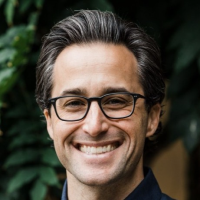This week we analyzed the new 2023 Forbes Cloud 100 List, compared to 4,400 similar sized companies from our B2B SaaS Index with 300-5K employees.
Top take-aways on LinkedIn. Comments are always appreciated to help new people find us.
All 100 companies enriched in this spreadsheet
These kind of "PR awards" get some deserved skepticism.
But the Cloud 100 list always piques my interest.
The team at BVP knows their stuff and "gazillion dollar valuations" is a decent filter to find role models, analyze GTM trends, and spot the next wave of B2B SaaS market leaders.
Let's dig into how this year's list differs from their peers...
PLG by Default
Product-led has gone from a new movement to an established GTM playbook for SaaS leaders.
A massive 72% of Cloud 100 companies offer clear free plans or trials, 3x the number found in our SaaS index.
We saw this in last year's Cloud 100 and it shows even more in this year's update.
These companies understand that modern B2B buyers demand access and transparency when making purchase decisions.
PLG isn't confined to a particular niche; it's everywhere - from security to mar-tech to HR Tech.
Related, 48% have transparent pricing, almost 5x more their peers.
Companies like Pendo and Klaviyo are even opening up their pricing playbooks for everyone to see, showcasing figures as high as $40K/yr and ~$2K/mo.
AI Infiltrating SaaS
We've spent the last two decades watching software eat the world.
Now AI is eating software.
28% of Cloud 100 companies emphasize AI in their website headlines and descriptions.
A significant 29% are actively hiring for AI, ML, and Data Science talent (based on crawling career pages with Keyplay hiring signals).
Not surprisingly, AI platforms and enablers like OpenAI, DeepL, and Scale AI made this years list.
We also see a slew of AI-native products, such as Grammarly and Gong on the list, along with many AI-integrated products (where AI is a feature not the main focus) like Notion.
For more on how we're tracking AI, check out this deck.
Community-Centric Mindset
SaaS market leaders recognize the power of community.
Often these companies invest in community early and infuse the community mindset into their entire GTM and product-strategy.
60% of this years Cloud 100 have an owned community of some kind.
That's 2.3x more than the PeerSignal index comparison group.
Cloud 100 companies like Webflow, Notion, and Zapier exemplify this community-driven approach.
Naturally we're big believers in this approach, starting PeerSignal before Keyplay.
Partners, Ecosystems, & Integrations
We see a multitude of signals that suggest Cloud 100 are integrating and partnering aggressively.
They understand the value of participating in the ecosystem and connecting with their customers' other tools and services.
74% have a Partners page, 1.7x the comparison group.
53% have a public API, 3.8x the comparison group.
22% list multiple integrations, 3.6x the comparison group.
Bottom line:
The 2023 Forbes Cloud 100 isn’t just a flashy PR list.
They're showing us the next gen SaaS game, up close.
They make the list for valuations and growth rates, but there's a lot more to learn from how they operate.
From AI to PLG to Partner strategies, this group is worthy of further study.
What else should I break down and compare?
I'm happy to add columns to the spreadsheet and will keep digging where you see value.
---
Have more questions or feedback?
Join the conversation on LinkedIn.
